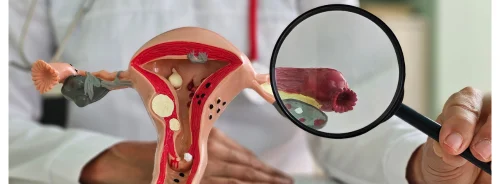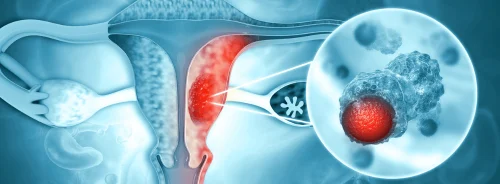Diagnostic errors represent a critical challenge in healthcare, often leading to significant patient harm and impacting overall care quality. Recognising this, the Leapfrog Group has published a comprehensive report, "Recognising Excellence in Diagnosis: Recommended Practices for Hospitals," offering a structured approach to minimise diagnostic errors. The core components of these recommended practices focus on building on existing progress, fostering innovation, and setting aspirational goals for diagnostic excellence.
Building on Progress
1. Communication of Diagnostic Errors
The first step towards enhancing diagnostic safety is the transparent communication of errors. Hospitals are encouraged to develop clear protocols for informing patients about diagnostic errors, ensuring that the communication is handled with sensitivity and clarity. This practice fosters trust and serves as a critical learning opportunity for healthcare providers. It emphasises the need for a cultural shift in healthcare settings, where errors are openly acknowledged and discussed, paving the way for systemic improvements.
2. Management of Diagnostic Uncertainty
Managing diagnostic uncertainty, especially during patient handoffs, is another vital area highlighted in the report. Handoffs are identified as critical moments where errors frequently occur, particularly when the diagnosis is not definitive. Hospitals are advised to implement standardised procedures that include comprehensive documentation of what has been done and what remains uncertain. Utilising tools like TeamSTEPPS® and IPASS can enhance both verbal and electronic communication, reducing the likelihood of missed or misunderstood information during transitions of care.
3. Enhancing Patient Engagement and Teamwork
Establishing clear goals for patient engagement and teamwork among care teams is crucial. The Leapfrog report advocates involving patients and their families in the diagnostic process, ensuring they understand their condition and the steps being taken. This engagement is complemented by improving internal communication within care teams, which can be facilitated through regular interdisciplinary rounds and the use of diagnostic safety toolkits. Such initiatives not only improve diagnostic accuracy but also enhance the overall patient experience by making them active participants in their healthcare journey.
Focused Innovation
1. Measurement and Monitoring
Innovative approaches to measuring and monitoring diagnostic safety are essential for continuous improvement. The report encourages hospitals to implement systems that track diagnostic errors and near misses, providing a framework for analysing these incidents to prevent future occurrences. This involves using advanced data analytics and decision support tools integrated into electronic health records (EHRs). By closely monitoring diagnostic outcomes, hospitals can identify patterns and areas for improvement, ultimately enhancing the accuracy and timeliness of diagnoses.
2. Multidisciplinary Teams
Creating multidisciplinary teams dedicated to diagnostic safety is another innovative strategy. These teams, composed of representatives from various specialities, are tasked with reviewing diagnostic processes and outcomes, conducting root-cause analyses of errors, and sharing findings with the broader healthcare team. This collaborative approach not only brings diverse perspectives to problem-solving but also ensures that diagnostic processes are scrutinised from multiple angles, leading to more comprehensive and effective solutions.
3. Implementing Closed-Loop Communication
Closed-loop communication, where the results of diagnostic tests are systematically followed up, is critical in preventing diagnostic errors. The report suggests integrating such practices into the hospital's standard operating procedures, ensuring that test results are not only communicated to patients and caregivers but also that appropriate follow-up actions are taken. This can involve automated systems that alert healthcare providers and patients when test results are ready, thereby closing the loop and ensuring no information is lost or overlooked.
Aspirational Goals
1. Training and Feedback for Clinicians
A key aspirational goal is the continuous education and feedback for clinicians. Hospitals are encouraged to invest in training programmes that enhance clinicians' diagnostic skills, particularly in recognising and minimising cognitive biases that can lead to errors. Additionally, providing regular feedback based on diagnostic performance can help clinicians refine their skills and stay updated with the latest diagnostic guidelines and best practices.
2. Transparency and Public Reporting
Transparency in reporting diagnostic errors and the measures taken to address them is crucial for public accountability and trust. The Leapfrog report recommends that hospitals not only report these incidents internally but also share them with the public and other institutions. This transparency helps build a safety culture and encourages other hospitals to adopt similar practices, raising the overall standard of care.
The path to diagnostic excellence in hospitals involves a comprehensive approach that includes clear communication of errors, management of diagnostic uncertainty, patient engagement, and continuous innovation in diagnostic practices. By setting and pursuing aspirational goals, such as enhanced clinician training and transparency in reporting, hospitals can significantly reduce diagnostic errors, improve patient outcomes, and foster a culture of safety and trust. The Leapfrog Group's report provides a robust framework for hospitals to achieve these objectives, making diagnostic excellence a tangible and achievable goal.
Source: The Leapfrog Group
Image Credit: iStock






